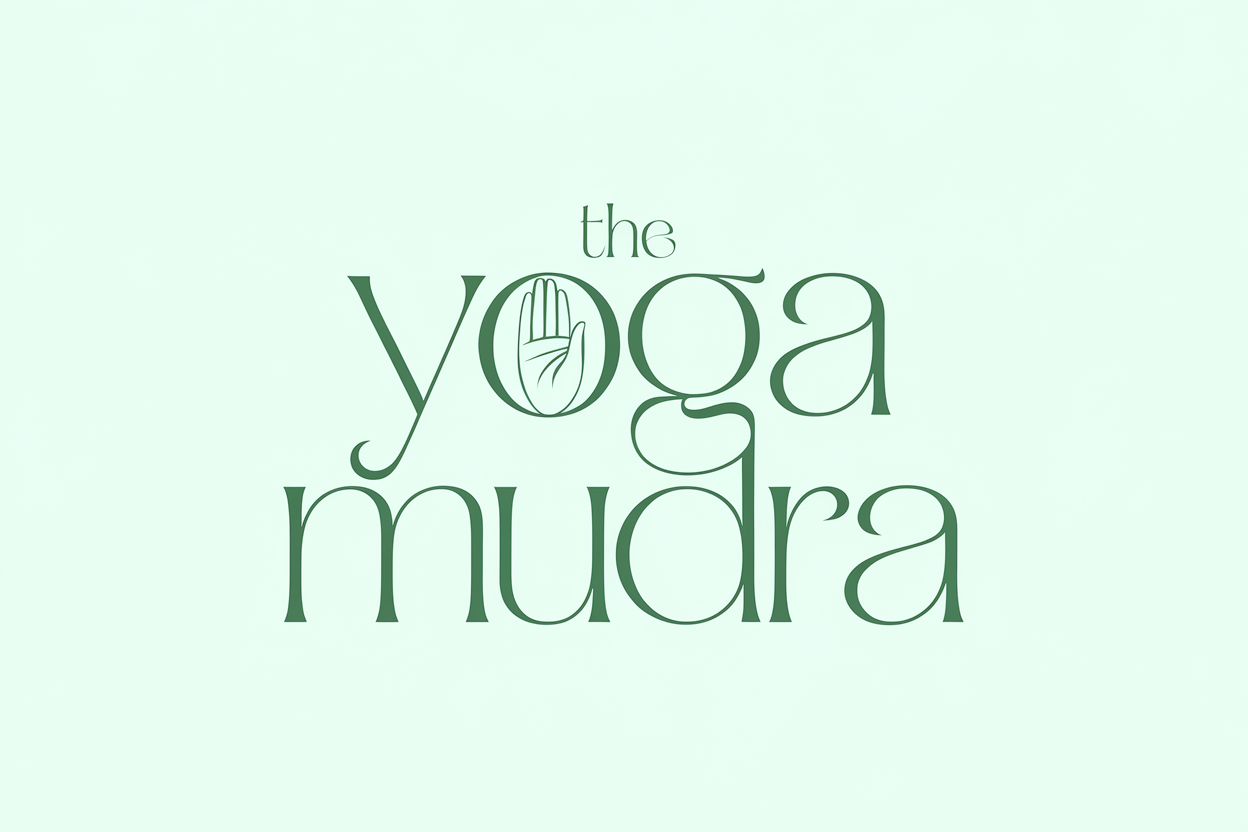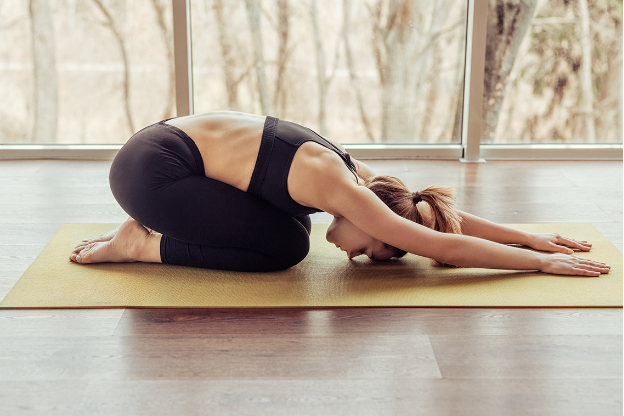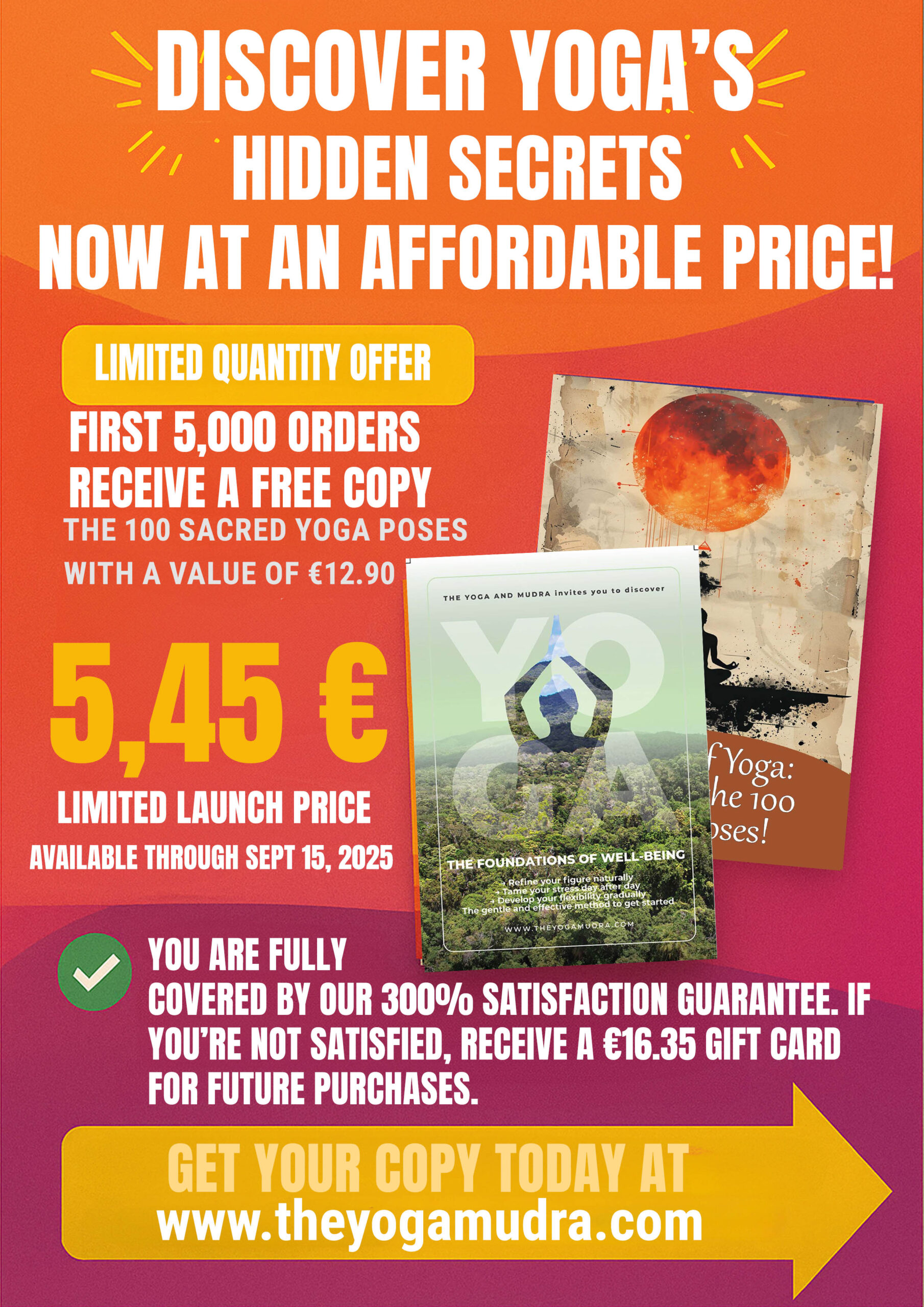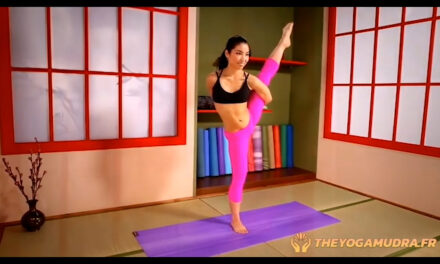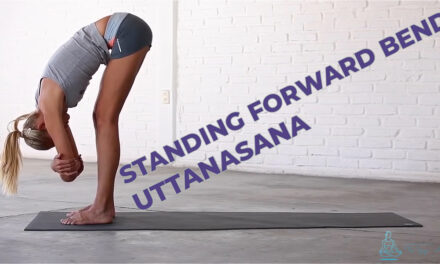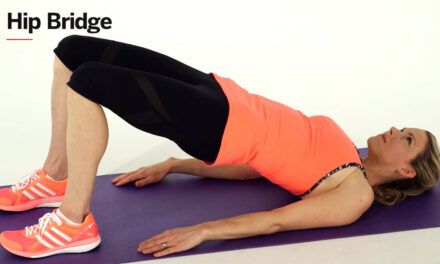POSTURE 23: CHILD’S POSE Sanskrit : Balasana
Skrit : Svarga Dvijasana [Svah-gah Dvi-jah-sa-na]
Level : Advanced
DESCRIPTION OF THE POSTURE
The Child’s Pose is a gentle asana that delicately stretches the lower back, hips, thighs, knees, and ankles. It also relaxes the spine, shoulders, and neck while increasing blood circulation to the head. This posture symbolizes relaxation and protection, inviting practitioners to reconnect with a state of inner calm. It is an excellent warm-up or relaxation pose, ideal for unwinding before sleep.
Steps to Perform the Posture :
- Starting Position : Kneeling Position
Begin on your knees on the mat, with your knees slightly apart at hip width. Your big toes can be touching or slightly separated, depending on your comfort. Sit back on your heels if accessible; otherwise, maintain a neutral position.
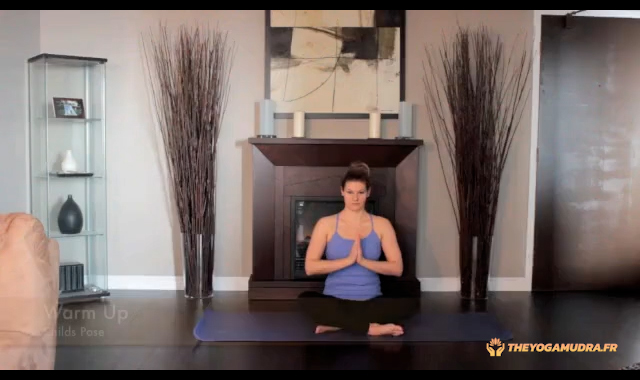
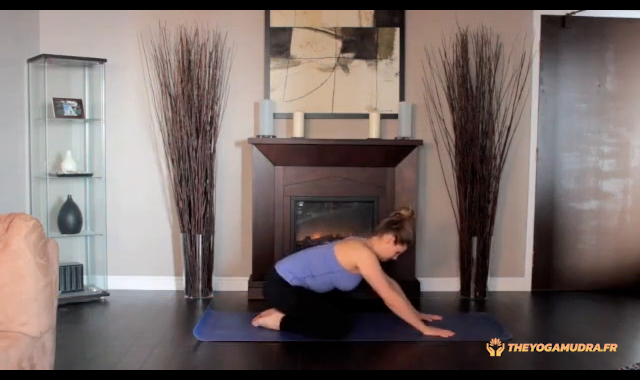
- Forward Inclination
Exhale gently as you incline your torso forward until it rests between your thighs. Gently place your forehead on the ground, creating a soothing point of contact. You can rest your arms alongside your body, palms facing upward, for a more passive version, or extend them forward with palms on the ground for a slight additional stretch. - Holding and Adjustments
Hold this posture for 3 to 5 minutes. Release any tension in your shoulders, neck, and back. With each exhale, imagine your spine gently lengthening, allowing you to sink deeper into the pose. Visualize your body as a protective cocoon, symbolizing safety and tranquility.
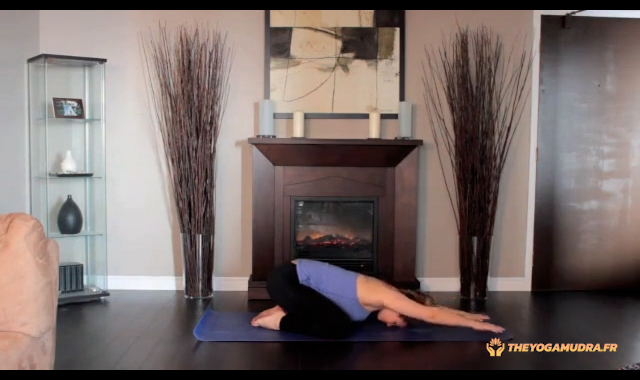
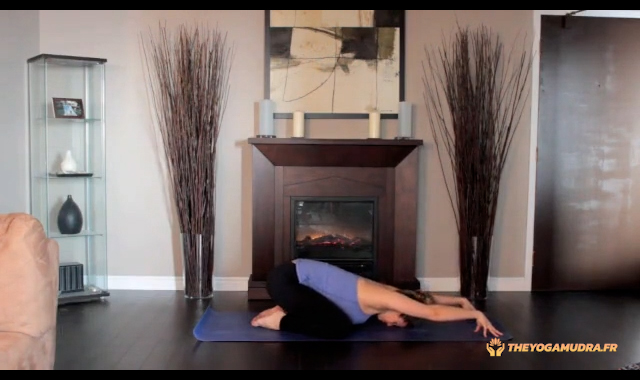
- Exiting the Posture
Inhale deeply as you slowly return to a seated position. Take a few moments to feel the calming effects of the posture before continuing your practice.
Extract from our book The Art of Yoga – Posture #23
Discover the power of yoga to transform your body, calm your mind, and redefine your daily life — even if you're just starting today.
Dive into an inner journey with this complete and gentle book, designed to introduce you to yoga in a simple and authentic way. Accessible to all, rich in ancestral techniques and practical advice, it helps you cultivate strength, serenity, and mental clarity in your daily life. Let yoga return to what it has always been: a philosophy of life, within your reach.
SPECIFIC BENEFITS
- Physical :
This posture primarily targets the lower back, hips, thighs, knees, and ankles. It improves joint flexibility and promotes better spinal mobility. - Mental :
By cultivating relaxation and mindfulness, it helps calm the mind and release accumulated tension. Ideal for centering yourself and soothing the mind. - Energetic :
In Ayurvedic medicine, Balasana activates Muladhara, the root chakra, associated with stability and grounding, as well as Vishuddha, the throat chakra, linked to inner communication.
LEVEL OF DIFFICULTY
This posture is perfectly suited for beginners, as it is simple to perform while offering immediate benefits. Advanced practitioners can extend the hold to deepen relaxation.
TIPS & VARIATIONS
- For Beginners :
If you struggle to place your forehead on the ground, use a cushion or block under your forehead to reduce the distance. You can also keep your hips slightly elevated if you feel excessive tension in your hips. - With Props :
Place a cushion under your knees to protect them or use a bolster under your torso to support your posture if you find it difficult to fully relax. - For Pregnant Women :
Widen your knees slightly to create space for your belly. Opt for a modified version where your arms are extended forward to avoid compression. - Dynamic Version :
For individuals with limited mobility, practice this pose seated on a chair. Gently incline your torso forward, maintaining proper alignment.
SAFETY CONSIDERATIONS
- Knee Caution : Do not force your knees toward the ground if you feel excessive tension. Use a cushion or thick mat to protect them.
- Neck Relaxation : Do not let your head hang too low. Keep it slightly tilted to avoid unnecessary tension.
- Contraindications : This posture is not recommended in cases of severe knee, hip, or back injuries.
BREATHING INSTRUCTIONS
- Inhale deeply as you gently lengthen your spine.
- Exhale calmly to release any tension and sink deeper into the posture.
- During the hold, breathe steadily to stabilize your energy and maximize the benefits.
IMPORTANT TO KNOW
Actively engage your abdominal muscles to protect your lower back and enhance the effectiveness of the posture. Visualize your breath as a fluid wave, symbolizing calmness and regeneration.
HISTORICAL OR PHILOSOPHICAL NOTE
Balasana, literally « the child’s pose, » symbolizes innocence and vulnerability. In some yogic traditions, it represents a return to a state of simplicity and purity, inviting practitioners to reconnect with themselves with gentleness and compassion. It is an invitation to cultivate inner peace and serenity.
✨ Practice Safely :
Consult a doctor if you experience persistent pain or unusual discomfort during or after practicing.
Recommended Duration :
Hold the posture for 3 to 5 minutes, accompanied by deep breathing.
